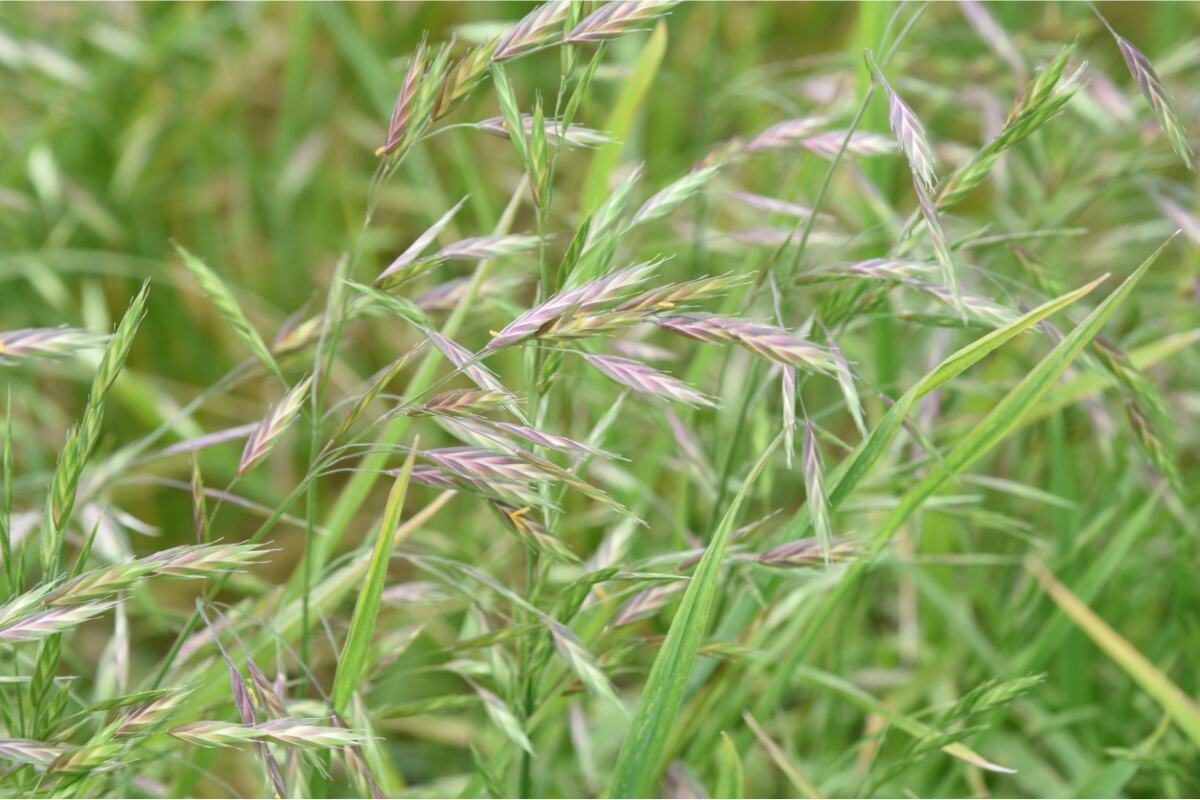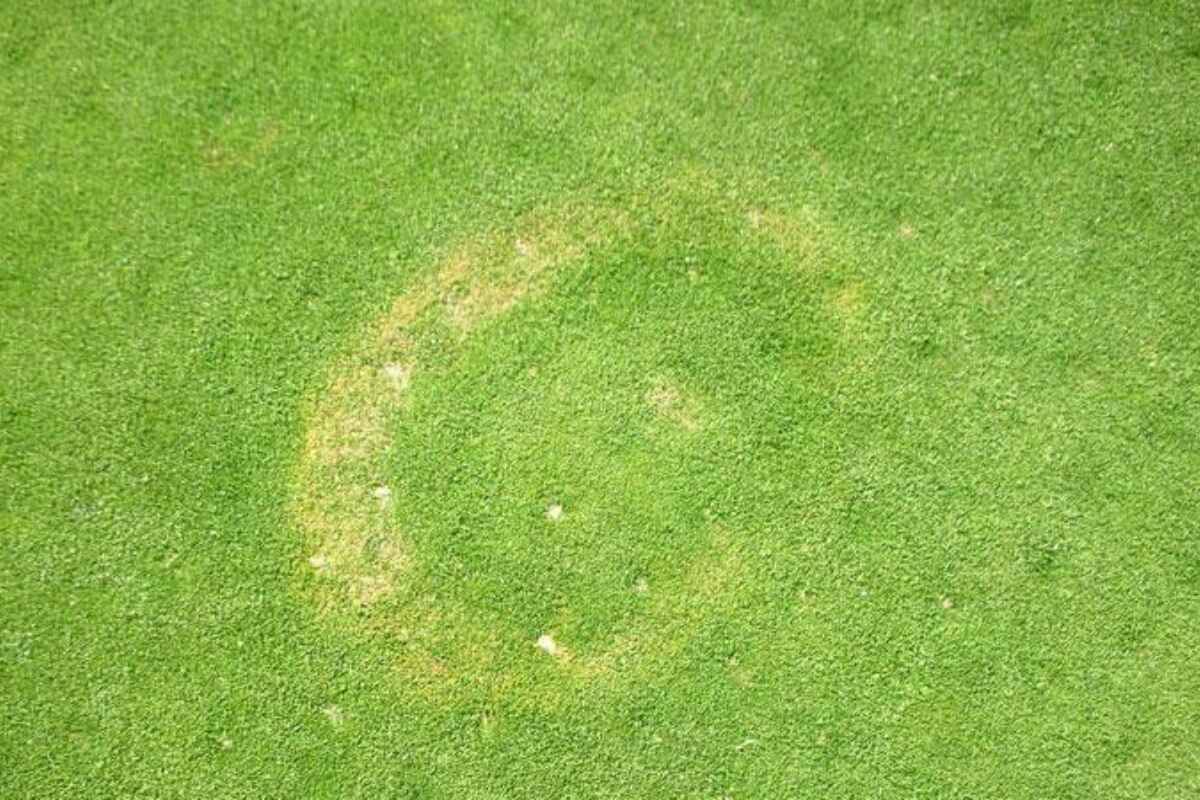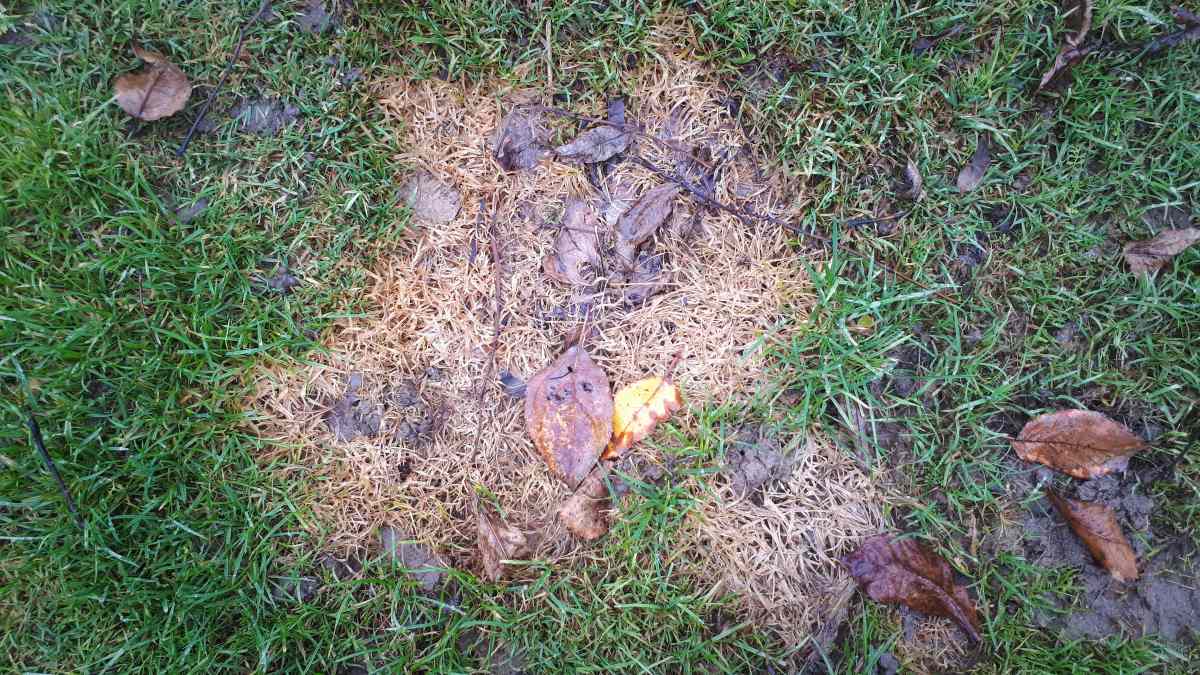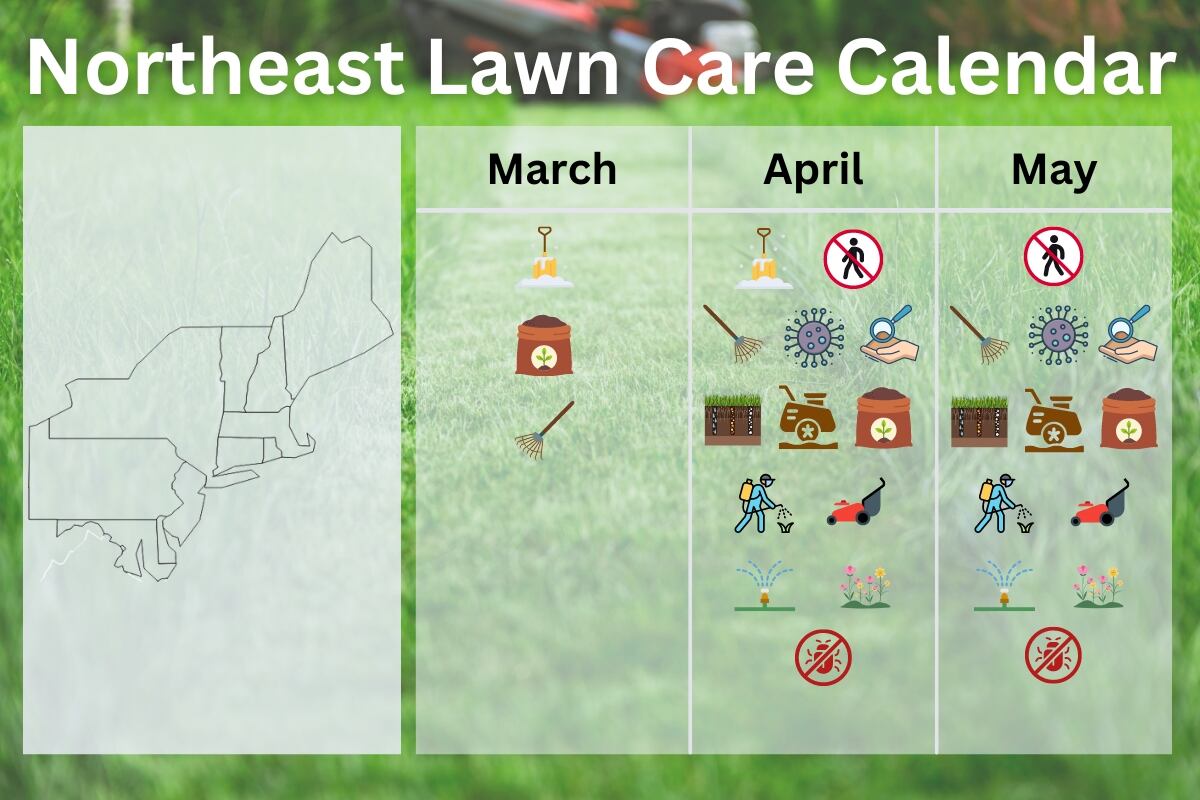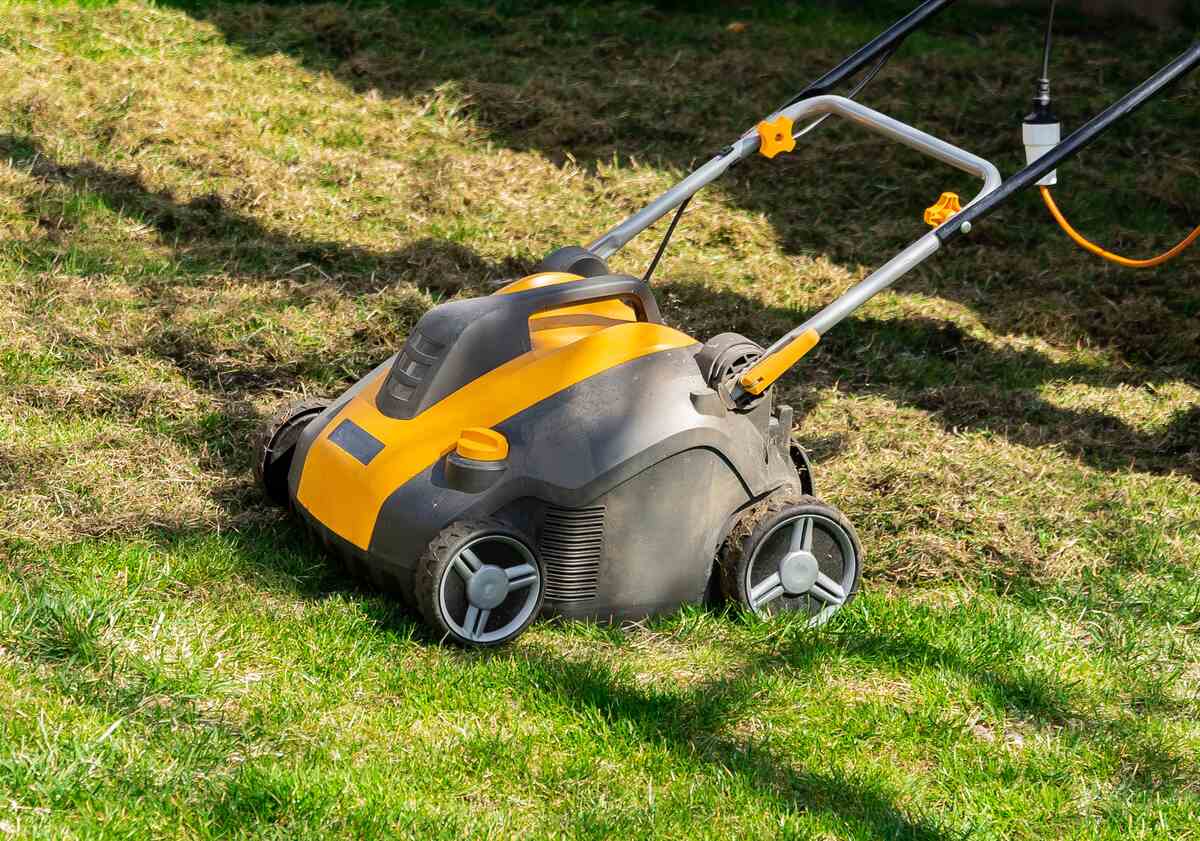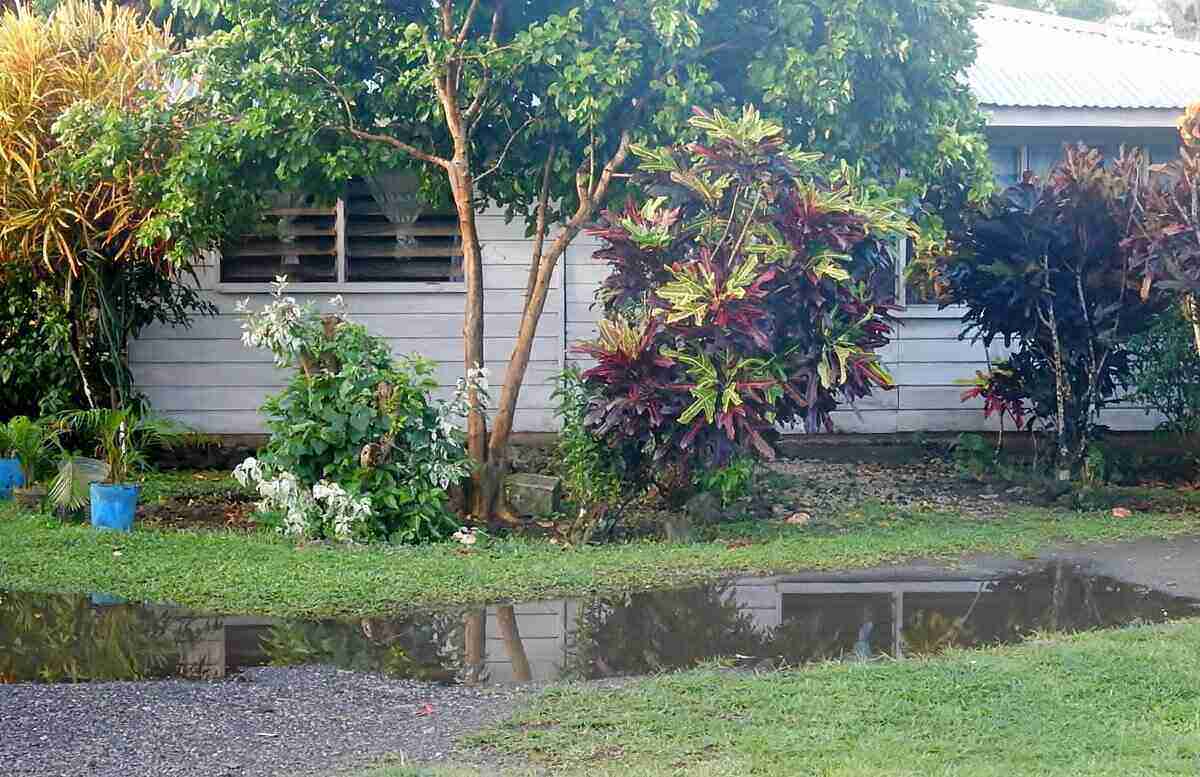
From yellowing grass and bare patches to weeds, pests, thatch, and lawn diseases, there are many signs of overwatering the lawn.
Knowing when you’re overwatering and how to fix it can save your lawn from becoming a botanical Atlantis. We’ll cover key signs of overwatering and essential repair strategies to help you rescue your lawn from its watery grave.
1. Wilting and Yellowing Grass
If your grass is wilting or turning yellow despite your diligent watering routine, it’s time to hit the brakes on the H2O.
When your lawn starts looking more like a patchy yellow quilt than a healthy green lawn, it can be a sign your grass blades are drowning. Overwatering prevents oxygen from reaching the roots, effectively suffocating them. This lack of oxygen causes the blades to lose their green color, turning them yellow and limp.
If left unchecked, this can lead to root rot, making your lawn’s situation go from bad to worse.
2. Puddles or Runoff Water
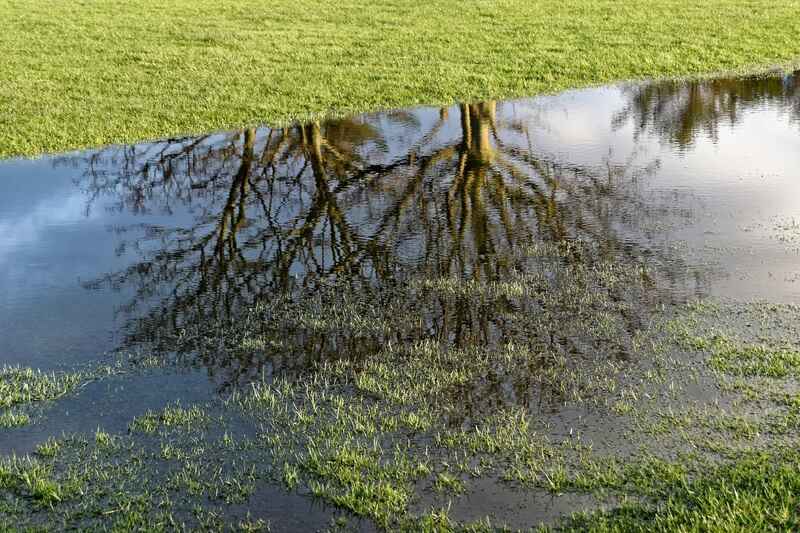
Noticing puddles or runoff water every time you water your lawn? This is a red flag that your lawn is overwatered.
In a healthy lawn, water is quickly absorbed by the soil, leaving no traces behind. However, if puddles persist long after you’ve turned off the hose, or you see water running off your lawn, it’s a clear sign that the soil is either saturated or compacted. This excess water can also wash away essential fertilizers and nutrients, further weakening your lawn.
3. Lawn Diseases
If your lawn is showing signs of diseases such as brown patch, dollar spot, rust, gray leaf spot or powdery mildew, it’s a clear indication that something is wrong. Excess moisture creates the perfect breeding ground for these lawn diseases, turning your turf into a patchy mess.
Here are some guides to know more about these lawn diseases:
- How to Control Brown Patch
- How to Control Dollar Spot
- How to Control Leaf Rust in Grass
- How to Control Gray Leaf Spot
- How to Control Powdery Mildew
4. Fungus Troubles
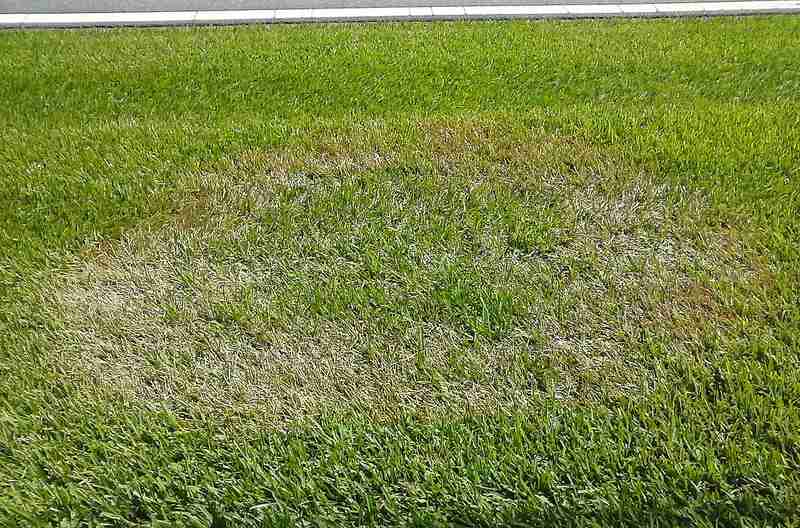
Photo Credit: Scot Nelson / Wikimedia Commons / CC0 1.0
Spotting yellow or brown patches on your lawn? You might be dealing with a fungus problem. While overwatering isn’t always the direct cause, it certainly doesn’t help.
Fungi love wet environments, and an overwatered lawn is an open invitation for these invaders. Mushrooms popping up are an early warning sign that your watering routine needs adjustment. Check this guide on Lawn Fungus Treatments: Costs, Types, and Do They Work?
5. Bare Patches in Your Lawn
Do you have thin areas or bare, patchy spots on your lawn? When grass is constantly soaked, it struggles to develop healthy roots, leading to thinning and bare patches. Without proper air and nutrients, your lawn starts to deteriorate, creating open areas that are an invitation for weeds.
6. Weed Invasion
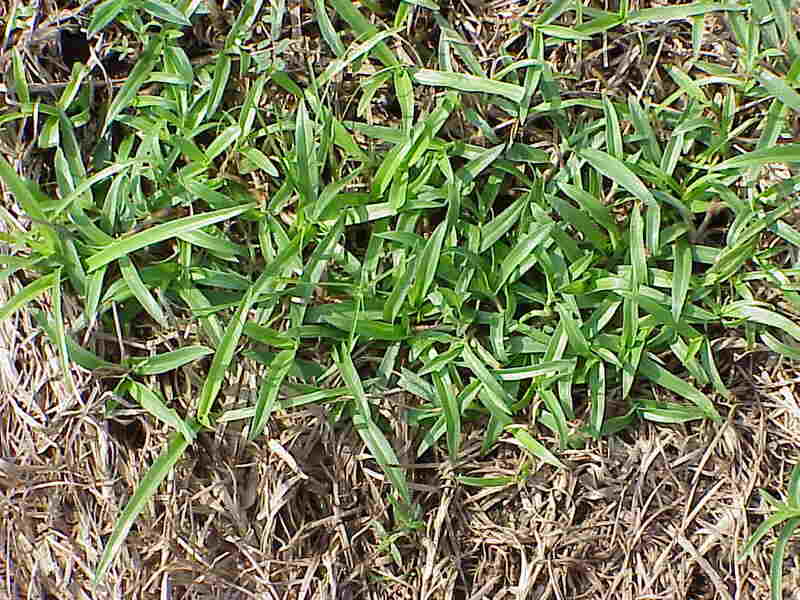
You may be overwatering your lawn, if you see these weeds taking over:
- Doveweed
- Dollar weed
- Yellow nutsedge
- Virginia buttonweed
- Crabgrass
- Annual bluegrass
- Violets
- Ground ivy
Keeping your lawn consistently wet creates the perfect environment for these invaders to flourish. Here’s a Guide to Weed Control in Your Yard.
7. Pests
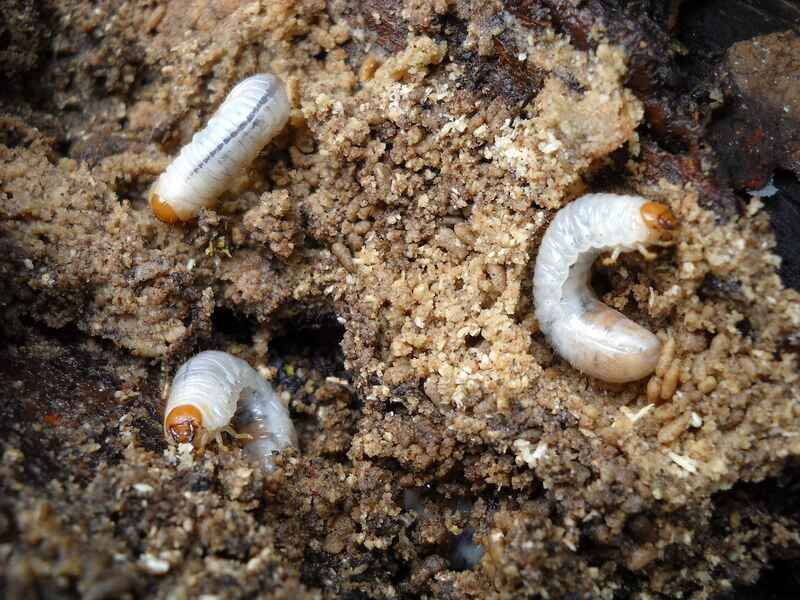
Overwatering your lawn not only stresses the grass but also creates an ideal environment for a host of pests. Moist soil attracts a variety of insects, including:
- Grubs
- Mosquitoes
- Fleas
- Termites
- Carpenter ants
- Cutworms
- Sod webworms
- Chinch bugs
- Mole crickets
To keep these pesky invaders at bay, avoid overwatering your lawn.
Here you will find more information about some of the above pests:
- How to Get Rid of Chinch Bugs
- How to Get Rid of Mole Crickets
- How to Get Rid of Lawn Grubs
- How to Get Rid of Mosquitoes
- How to Get Rid of Cutworms
8. Spongy Ground Feeling
If your lawn feels squishy and spongy underfoot or if footprints leave lasting impressions, you’re likely overwatering. A healthy lawn should spring back instantly when walked on. Overly wet soil doesn’t provide the necessary support, making your lawn feel like a sponge.
9. Slow Growth
If your grass is growing at a snail’s pace, overwatering might be the reason. Excessive watering can flush vital nutrients from the soil, leaving your grass starved and struggling to grow.
If your lawn looks like it’s stuck in slow motion, it’s time to reduce the watering and give your grass a chance to access the nutrients essential for healthy growth.
10. Abundance of Thatch
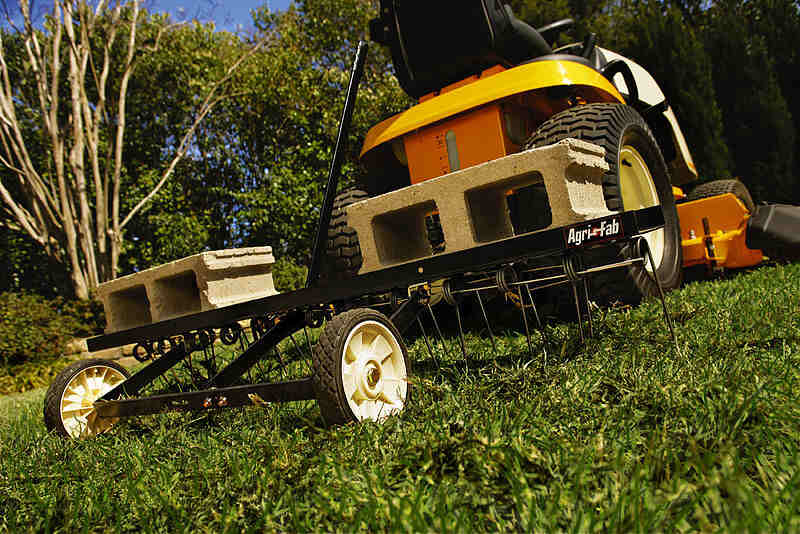
Thatch, a thick layer of partially decomposed plant matter, can become a problem if it gets too thick. While a half-inch of thatch is healthy, anything more can spell trouble for your lawn.
Overwatering often leads to excessive thatch buildup, creating a dense mat on the soil’s surface that blocks access to vital nutrients, air, and sunlight. If you notice a thick layer of thatch, it’s a sign you need to cut back on the watering and possibly take steps to remove the excess.
FAQ About Watering Your Lawn
When is the best time to water your lawn in hot weather?
The best time of day to water your lawn during hot weather is between 5 and 9 a.m. Early morning irrigation prevents evaporation and gives water time to dry before night, reducing the risk of pests and diseases. Here’s a guide on When is the Best Time to Water Your Lawn in Hot Weather?
How long should I run my sprinkler system?
The best method to know how long to run your sprinkler system for your lawn to get the right amount of water is by conducting the ‘tuna can test’.
Is it ok to remove dead grass from my lawn?
Yes. If the dead grass (thatch layer) is thicker than half an inch, it’s best to remove it.
Call a Lawn Care Pro
Sometimes, fixing an overwatered lawn can be overwhelming, especially if the damage is extensive. If you find the mess too difficult to handle on your own, call a lawn care professional.
They know how to diagnose and address the specific issues affecting your lawn. Whether it’s dealing with compaction or just mowing, a lawn care pro near you can help restore your lawn to its healthy, green glory.
Main Image Credit: Michael Coghlan / Flickr / CC BY-SA 2.0
